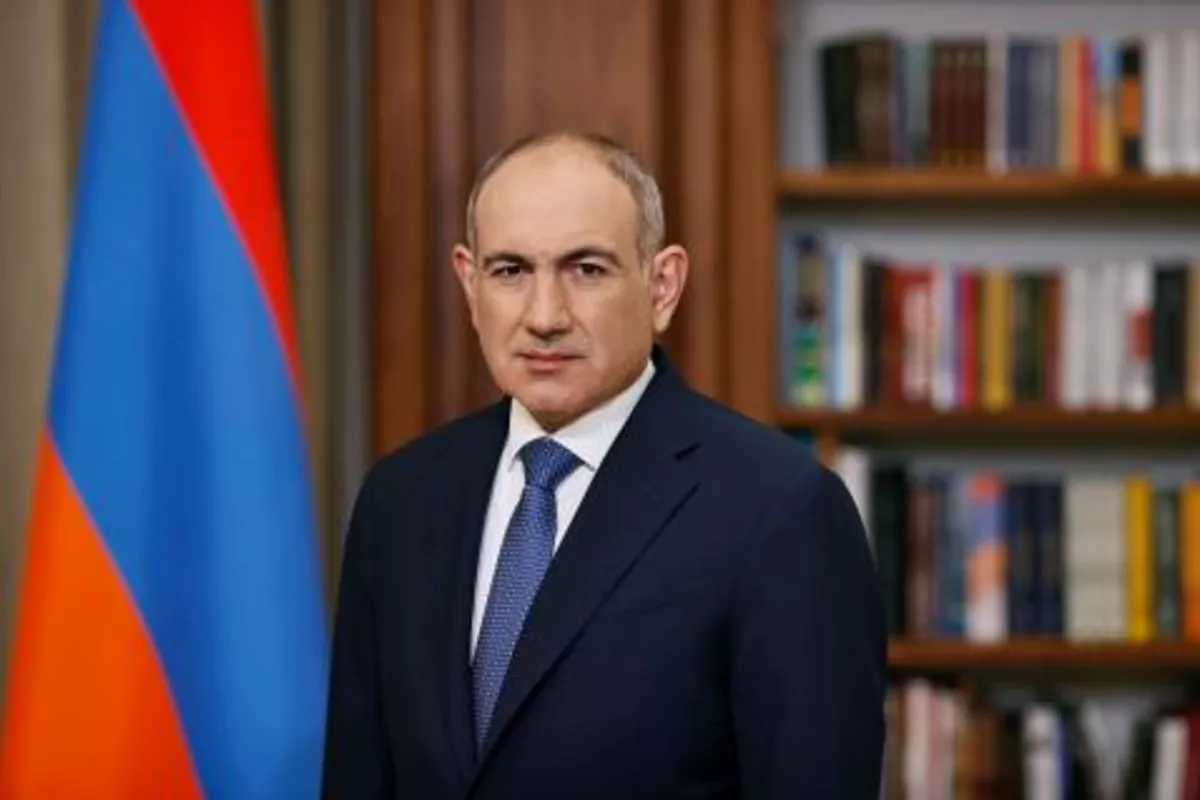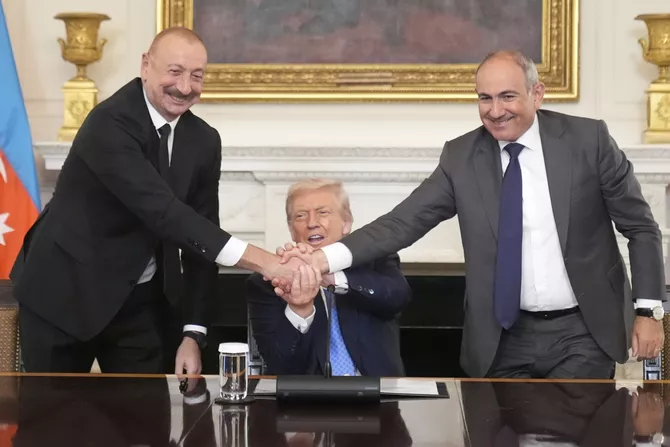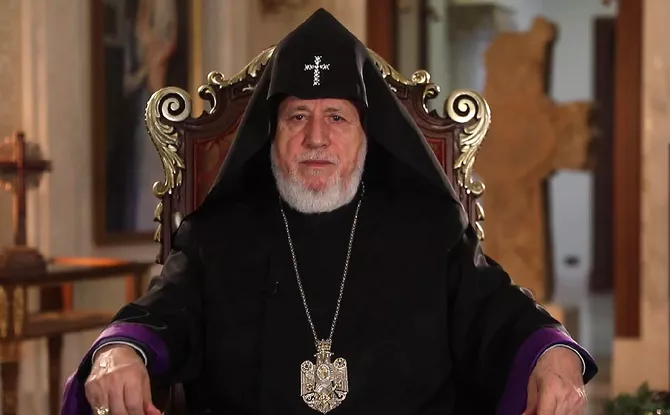
photo: Armenpress.am
On September 20, Armenian Prime Minister Nikol Pashinyan presented a bold and transformative vision for his country’s future at the 7th Congress of the ruling Civil Contract party. In what may be one of the most consequential speeches of his political career, Pashinyan announced his intention to establish the Fourth Republic of Armenia, a historic move that would fundamentally reshape the nation’s political and institutional landscape. According to his plan, this new republic will be officially ratified after the 2026 parliamentary elections through a nationwide referendum, ushering in a new constitutional framework and a redefined role for Armenia on the world stage.
Pashinyan framed this announcement as a strategic necessity rather than merely a political maneuver. He argued that Armenia had entered a fundamentally new stage of its history, made possible by a fragile but significant peace with neighboring Azerbaijan. “This peace was established in Washington on August 8 with the participation and support of U.S. President Donald Trump, as well as through the declaration signed by me and the President of Azerbaijan,” Pashinyan stated. “For a year and seven months, not a single soldier has been killed or wounded as a result of cross-border shootings.”

photo: NBC News
These words carry profound weight. For decades, Armenia has been defined by conflict, particularly the protracted and devastating struggle over Nagorno-Karabakh. Pashinyan’s reference to the absence of casualties reflects not only a military ceasefire but also a tentative shift away from the cycle of hostility that has long shaped Armenian politics and society. By framing peace as the foundation of his Fourth Republic project, Pashinyan is signaling a break with the past-a move toward reconciliation and modernization, even at the cost of confronting entrenched nationalist sentiments at home.
A Vision of Integration and Reform
In his address, Pashinyan also emphasized the importance of regional integration, highlighting active dialogue with Türkiye. “This dialogue gives us confidence that in the near future we will have direct overland transportation routes with Türkiye and, consequently, with the European Union,” he declared. Such a development would be a geopolitical game-changer for Armenia, providing new economic lifelines and reducing the country’s dependence on traditional alliances that have, at times, limited its strategic options.
At the core of Pashinyan’s vision is more than just a new Constitution or cosmetic reforms. His plan represents a comprehensive institutional transformation: a rethinking of foreign policy, a strengthening of internal sovereignty, and a deliberate pivot toward good-neighborly relations with Armenia’s regional partners. For Azerbaijan, this vision holds particular importance. It suggests a genuine opportunity for a lasting peace agreement, provided Armenia fulfills its commitments and refrains from backsliding into revanchist politics.
Recent moves by the Armenian government illustrate this shift. Authorities have begun altering state symbols to reflect new geopolitical realities and signal a break with the past. Perhaps the most notable decision was to remove the iconic image of Mount Ararat from border stamps starting November 1, 2025. For many Armenians, Mount Ararat has long been a symbol of national identity and historical memory. Its removal is deeply symbolic, representing a conscious move away from irredentist narratives that have fueled decades of conflict. Simultaneously, the Civil Contract party amended its charter, eliminating language that linked its handshake-shaped logo to the silhouette of Ararat.
Challenges Ahead
Turning this ambitious vision into reality will be far from easy. Preparing for a constitutional referendum requires not only technical and legal work but also a profound national dialogue. Public debates must be launched, expert platforms created, and mechanisms for inclusivity established. Opposition parties, the Armenian diaspora, and civil society groups will need to be engaged to ensure the process is perceived as legitimate. This is no small task in a society still deeply divided by past wars and political upheavals.
The political risks are significant. Many Armenians remain skeptical of Pashinyan’s leadership, particularly following the defeat in the Second Karabakh War. Former presidents Levon Ter-Petrosyan, Robert Kocharyan, and Serzh Sargsyan-figures associated with the old political elite-have fiercely criticized Pashinyan’s plans, framing them as a betrayal of national interests. While their chances of returning to power are slim due to widespread public disillusionment, they still hold sway over certain segments of the population, particularly through nationalist rhetoric and media platforms.
Moreover, Pashinyan’s initiatives to change national symbols and proclaim a Fourth Republic have been met with suspicion by many citizens, who see them as an attempt to deflect blame for past failures and avoid accountability for military defeat. This narrative is amplified by opposition forces eager to exploit public discontent ahead of the 2026 elections.

photo: The Armenian Weekly
A Struggle with the Church
Complicating matters further is Pashinyan’s escalating confrontation with the Armenian Apostolic Church. Historically, the Church has been one of the most trusted institutions in the country, serving as a pillar of cultural identity and national resilience. Since Armenia’s defeat in 2020, however, the Church has openly positioned itself as a political opponent of the Prime Minister. Catholicos Garegin II, the spiritual head of the Church, has repeatedly called for Pashinyan’s resignation, arguing that his policies endanger Armenia’s sovereignty and spiritual foundations.
This conflict reached a dramatic peak in 2024 when Archbishop Bagrat Galstanyan led massive protests against border demarcation agreements with Azerbaijan. These demonstrations, the largest since the 2018 Velvet Revolution, highlighted the Church’s capacity to mobilize large segments of society and challenge the government’s authority.
At the party congress, Pashinyan directly addressed this issue, making it clear that his government intends to confront the Church head-on. He openly called for the removal of Catholicos Garegin II, despite his lifetime appointment under Church law. “The Armenian Apostolic Church must return to a pro-state, state-oriented path, which is impossible without the removal of Ktrich Nerses (the secular name of Garegin II),” Pashinyan declared.
This move is widely seen by experts as a preemptive strike against one of Pashinyan’s most powerful political rivals ahead of the 2026 elections. Public opinion polls consistently show that Armenians trust the Church far more than state institutions, making it a formidable opponent. For many citizens, the Church is not just a religious body but a symbol of resistance and the guardian of historical memory. By targeting it, Pashinyan risks deepening societal polarization and triggering an even greater political crisis.
Looking Toward 2026
As Armenia approaches the 2026 elections, the stakes could not be higher. The contest between Pashinyan’s vision of a modern, peaceful, outward-looking Armenia and the entrenched forces of nationalism and conservatism will define the country’s trajectory for decades.
If Pashinyan succeeds in implementing his reforms and maintaining internal stability, Armenia could emerge as a more resilient state, integrated into regional economic and political networks, and finally free from the cycles of conflict that have long hindered its development. However, failure could plunge the nation back into turmoil, with renewed political instability and even the risk of violence.
The battle lines are already drawn: a Prime Minister seeking to build a Fourth Republic on the foundations of peace and reform, facing an opposition that includes both political rivals and powerful religious institutions. The coming years will determine whether Armenia can seize this historic opportunity-or whether old divisions will once again prevail.
In this moment of profound uncertainty, one thing is clear: Armenia stands at a crossroads. The choices made in the next two years will not only shape the outcome of the 2026 elections but also decide the future of the nation itself.
By Asif Aydinly
Share on social media